On vous l’a présentée dans notre récente chronique du film « Swissway to heaven« , « Fly » (8b+, 550m, 20 longueurs dans le Lauterbrunnen, Suisse) est une des grandes-voies parmi les plus dures des Alpes.
Elle a été ouverte par Roger Schaeli entre 2004 et 2008 avant qu’Alex Megos (2014) puis Cédric Lachat (2019) ne la réalisent en libre. Vaincue en libre deux fois en 2 essais, la voie a connu la semaine passée deux autre répétitions grâce aux top grimpeurs belges Siebe Vanhee et Seb Berthe, qui l’ont réalisée « ground-up », soit du sol, sans repérage préalable !
Siebe nous raconte :
« Fly a été sur ma liste depuis que je me suis tourné vers les grandes-voies dures. On ne pouvait faire mieux. Avec mon compatriote Seb, nous sommes partis le 12 juin dans la voie pour une tentative ground-up avec l’objectif de réaliser chaque longueur sans retourner au sol, ce qui est le mode le plus pur pour réaliser une grande-voie alpine. Nous avions lu les ressentis de Cédric Lachat sur la difficulté de la voie et nous nous étions préparés pour 5 jours en paroi maximum. Afin de garder une trace, la photographe pro Julia Cassou nous a rejoint. La team parfaite pour une bonne aventure !
Nous sommes partis à 7 h du matin du camp de base, avec nos sacs de hissage et nos portaledges pour une tentative en complète autonomie. Le but de la première journée était d’arriver sous la longueur 17 en grimpant tout en libre et en réversible, en hissant notre matos au fur et à mesure. Entre le poids de nos sacs de hissage et le caractère soutenu des longueurs en 7ème degré de l’itinéraire, le plan était ambitieux. Mais plus tôt on atteindrait cette vire sous la longueur 17, plus ont se donnait d’expédier les 3 longueurs clé restantes. Les 9 premières longueurs sont très dalleuses, dures à lire et assez sales. Cela ne nous a pas empêché de les réaliser toutes à vue, à l’exception de 2 7c. On a été relativement rapide, et à 14h30 nous étions sur le vire, juste à temps pour se faire rôtir par le soleil qui arrivait sur la face sans nous faire perdre notre précieuse peau des doigts ! Julia nous rejoint sur la vire et nous avons installé des cordes statiques pour pouvoir immortaliser nos essais pour les jours suivants.

Un départ très tôt était nécessaire pour avoir un maximum d’ombre car la face prend le soleil à 14h. Le second jour Seb a démarré et a réalisé à vue la longueur 17 en 8b, en mettant d’entrée la barre très haute pour un jour 2 ! J’étais nerveux mais j’ai réalisé la longueur flash dans la foulée pendant que Julia s’en donnait à cœur joie pour les images. Nous avons continué de grimper avec la longueur suivante en 7b+ qui amène au crux de la voie, la fameuse longueur en 8c. Je suis parti en premier pour une longue épopée vers le relais. j’ai brossé les prises, trouvé les méthodes et j’ai fait en sorte que ce crux soit grimpable. Défricher une longueur en 8c dans une grande-voie alpine en calcaire est une expérience relativement intimidante. La paroi est sale, sans magnésie, et le gaz bien présent ! Après que Seb ait bossé les moves, j’ai mis un sérieux essai mais je suis tombé car j’ai cassé une prise dans une partie facile de la longueur. Mon 2e essai dans la voie, je me suis senti fatigué, avec plus de peau, j’étais nerveux mais déterminé. Et c’est passé ! Comme le soleil se pointait, Seb a raisonnablement gardé son énergie et sa peau pour le jour suivant. Nous sommes rescendus aux portaledges sur la vire pour une après-midi bain de soleil.
En ce début de 3ème jour, il ne me restait plus qu’une longueur à libérer. Seb était plus stressé, devant enchaîner la longueur clé. Très fort mentalement, il avala cette longueur clé. A mon tour de défricher cette dernière longueur en 8b+. Une dalle de 15 mètres avec un mouvement puissant sur une arquée plate. Mouvement par mouvement j’ai brossé et trouvé les méthodes, et à la fin j’avais des séquences pas trop mal. A son tour, Seb fit sa reconnaissance. Mon premier essai, j’ai chuté après le crux, encore à cause d’une réglette microscopique que j’ai arraché autour de mon annulaire. Je suis redescendu immédiatement au relais pour y mettre immédiatement un 3ème essai. Avec 2 doigts complètement strappés et les autres phallanges complètement fissurées et sanguinolentes j’ai arqué tout ce que j’ai pu et j’ai pu réaliser cette dernière longueur ! Il n’y a avait aucune autre alternative car grimper avec une plus mauvaise peau ou avec plus de strap auraient considérablement réduit mes chances de réussite. Peu importe, pour une dernière longueur d’une grande-voie aussi difficile, je ne pouvais pas cogiter sur ma peau des doigts. Bien que j’ai atteint le sommet, l’affaire n’était pas encore finie. Seb devait enchainer 2 essais plus tard il réussit aussi et la joie s’est emparée de nous ! Une 3ème et 4ème ascension en libre de « Fly », une incroyable aventure sur la mur, des images magnifiques et des super vibes avec une équipe formidable. Merci à Roger Schaeli d’avoir ouvert cette ligne et d’avoir partagé les infos avec nous. C’est une ne super ligne que tu as proposé à la communauté escalade ! Merci à Cédric Lachat et Tobias Suter pour les infos logistiques. Et bien sûr merci à Julia Cassou pour les belles photos et l’ambiance en paroi !
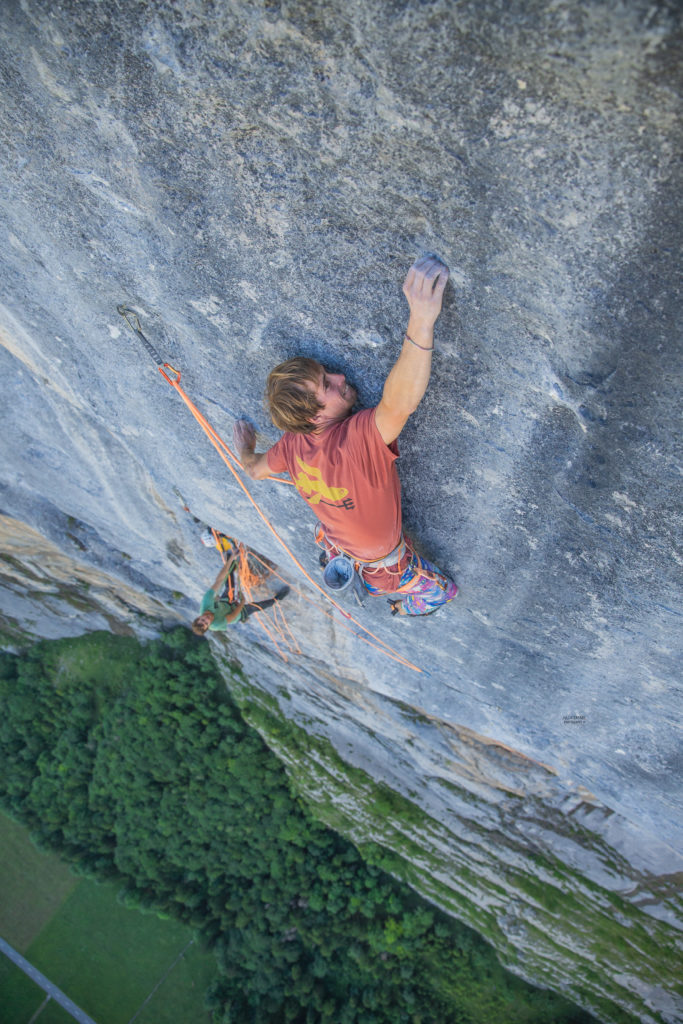
Sur le niveau
Nous voulions donner nos considérations sur le niveau de cette perle. Réaliser une première ascension et la coter peut être très compliué. La voie est souvent sale, intimidante et demande un paquet de ressources mentales. C’est après plusieurs ascensions que le niveau d’une voie commence à se stabiliser autour d’une consensus. Il est donc logique de se poser la question du niveau d’une pareille ligne.
C’est jamais facile de coter une grande-voie et plein de facteurs entrent en jeu. On a essayé de livrer un ressenti sur la base de nos expériences en paroi, avec des prises sales, pas de cake et le bout des doigts strappés à la fin, en essayant la voie ground-up, sans repérage préalable. Nous avons aussi considéré nos points forts : le fait d’être à l’aise dans un profil vertical et technique sur arquées, et notre bonne endurance. Nous pensons qu’il est important de donner des estimations correctes pour que la voie soit approchée avec des informations fiables et une réputation à la hauteur. Nénamoins nous ne sommes pas d’accord avec Cédric sur le niveau de la dernière longueur, plutôt 8b pour nous alors que Megos et Lachat l’estiment à 8b+. Nous réalisons que nous avons eu des conditions favorables pour une voie qui est très dépendante des éléments. Mais envisager l’ascension avec de bonnes conditions nous semble le meilleur moyen pour coter une voie. En tout cas nous sommes curieux de l’avis des prochains répétiteurs. »
Photos: Julia Cassou – JuliaCassou.com

« Fly ». This fairly new Swiss multipitch, opened by Roger Schaeli (2004-2008) and freeclimbed by Alex Megos (2014) and Cedric Lachat (2019), just received 2 more repeats the past week courtesy of top Belgian climbers Siebe Vanhee and Seb Berthe. They climbed the route ground-up, i-e without checking it before.
Siebe reports:
« Fly has been on my to-do list since I’ve set my mind on hard multipitches. Getting on Fly couldn’t be done on my own. Together with Belgian compatriot Sebastien Berthe, we left on June 12th to attempt a ground-up free ascent in the least days possible. For us, the ground-up ascent with the aim to send it all without returning to the ground is the purest way of climbing an alpine multipitch. Having read the stories of Cedric’s ascent about the difficulty of the route, we prepared for a maximum of five days on the wall. To document our ascent, we roped in friend and professional photographer Julia Cassou to join us. The perfect team for a good adventure.
Seb and I left the base at 7am in the morning, with our portaledge and haul bag fully packed for an autonomous sent. The aim of the day was to reach the ledge below pitch 17, swinging leads, climbing everything free and hauling our household with us. It seemed like an ambitious plan considering the heavy packs and the sustained grading in the high 7th grade. But the sooner we got on the ledge the sooner we could tackle the three upper crux pitches. The first nine pitches are slabby, hard to read and were quite dirty. This didn’t hinder us to climb them almost all onsight, except for two 7c’s. We were surprisingly quick, at 2:30pm we arrived at the ledge, just in time to get roasted in the sun without losing precious skin on our fingers! That same night, Julia joined us on the ledge and installed some static lines to shoot our ascent from above the following days.
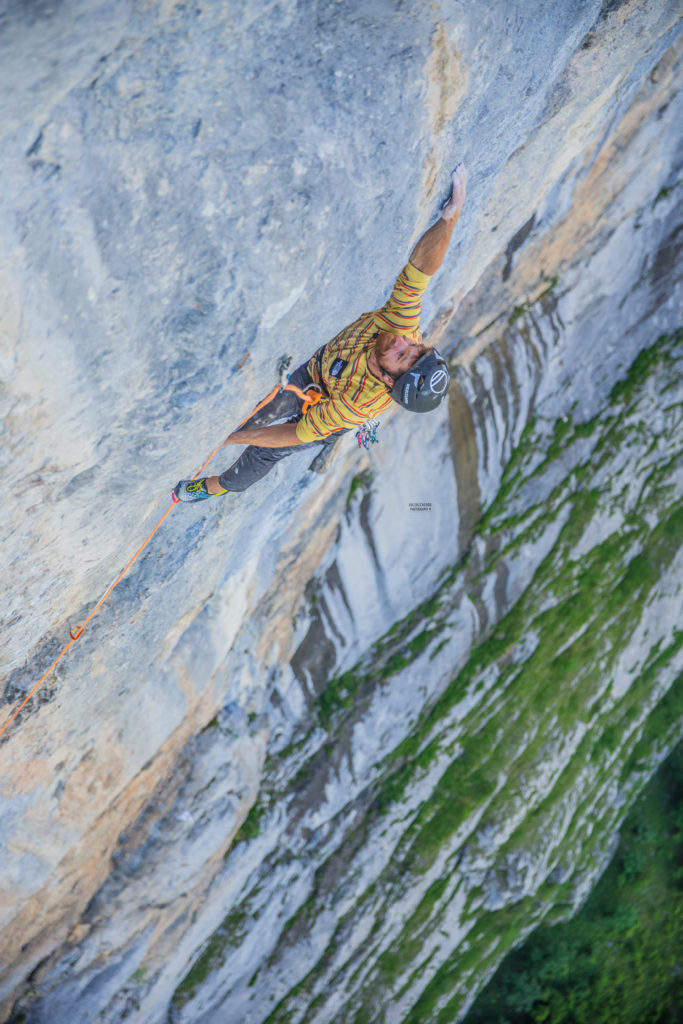
An early morning start was necessary to get as much shade as possible. This west facing wall gets sun at 2pm. This time Seb started off, he immediately onsighted the 8b (pitch 17) off the ledge. Setting the bar high for the day! I was nervous but managed to quickly flash the route after my partner while Julia was dangling above us capturing every emotion. We continued the climb with a 7b+ pitch up to the start of the crux of the whole line, graded 8c. I took off first, for a long journey towards the anchor. Slowly I found the beta, brushed and marked all the holds to make it look like a climbable piece of rock. Tackling an 8c pitch on an alpine limestone multipitch can be quite intimidating. There is dirt, no chalk and an incredibly exposed atmosphere! After Seb worked the moves, I gave it a solid go but fell due to a hold that broke in the easier section. I gave it a third go. I felt tired, had no skin left and climbed nervous but dedicated to send, which I did! The sun started to hit the wall, a good reason for Seb to save his energy and skin for the next morning. We descended back to our portaledge camp and started our second sunbathing session.
Day three, for me there was only one pitch left. Seb was in a more stressful position this time, having to still send the cruxpitch. First thing in the morning, mentally strong as he is, he cruised the pitch up to the anchor. My turn again to work out the moves of the last, 8b+, pitch. This pitch is a 15 meter slabclimb with one powerful move of a small flat crimp. Move by move I brushed and found the beta again, it didn’t seem too bad in the end. Again, Seb took his turn and worked the moves. I gave it a try and fell after the crux move due to a microscopic edge that broke below my ring finger. I came down immediately and gave it a third go straight away. With two fingertips taped and two others completely cracked and bleeding I crimped through the section and send this last pitch! There was no option to recover skin or put on more tape.
Anyway, for a last pitch of such a difficult and long multipitch I didn’t care about the skin anymore. Although I reached the anchor, it wasn’t over yet. Seb still had to send. Two more tries later he did and the joy was felt by all three of us! A third and fourth freeascent of ‘Fly’, an amazing adventure on the wall, quality images and some great vibes with a cool crew! Thank you so much to Roger Schaeli for opening this line and sharing some info with us. Yet another great line you gave to the climbing community. Thanks to Cédric Lachat and Tobias Suter for the info on logistics. And most of all, thanks to Julia Cassou for your amazing images and good vibes on the wall.
About the grade?
We would like to share our thoughts about the grading of this stellar climb. Climbing a first ascent and grading it can be pretty complicated. A first ascent is often dirty, intimidating and requires a lot of mental strength. It’s known that the grade of a climb needs several repeats before it can settle at his definite grade. So, it’s logical that repeating difficult climbs like this always raise the question about the grade. With ‘Fly’ it isn’t any different.
Based on my experience establishing first ascents, the repeats of the most classic difficult multipitches in Europe by Seb and myself and some phone calls with first ascensionist Roger Schaeli and Cédric Lachat who made the second free ascent, we suggest ‘Fly’ to be graded 8b+. The suggestion of the different grades can be found on the adjusted topo of Cédric and Tobias.
Considérant nos expériences de première ascension ou de répétition de grandes-voies en Europe et des appels téléphoniques avec Roger Schaeli et Cédric Lachat nous suggérons un niveau 8b+ pour « Fly ». Une suggestion du niveau des longueurs peut être trouvé dans le topo de Cédric et Tobias.
It is never easy to grade a multipitch climb because it depends on so many factors. We tried to grade the pitches how we experienced them on the wall, with dirty holds, no chalk and destroyed fingertips towards the end. Getting on the route ground-up, we didn’t work the pitches in advance. Also, we took in consideration our personal strengths; being vertical and technical climbing on crimps and a good endurance. We think it is important to give correct grades so the route can be approached with the right intentions and gets an honest reputation. Nonetheless my communication with Cédric, we don’t agree about the grading of the last pitch. This short technical pitch was graded 8b+ by Megos and Cédric. For Sebastien and I it honestly felt more like 8b. We also realize that we had favorable conditions on the wall for climbing such a condition depending route. But having good conditions seems to us the best way to correctly grade a climb. Anyway, we curiously wait the reactions of future repetitions! »
Photos: Julia Cassou – JuliaCassou.com



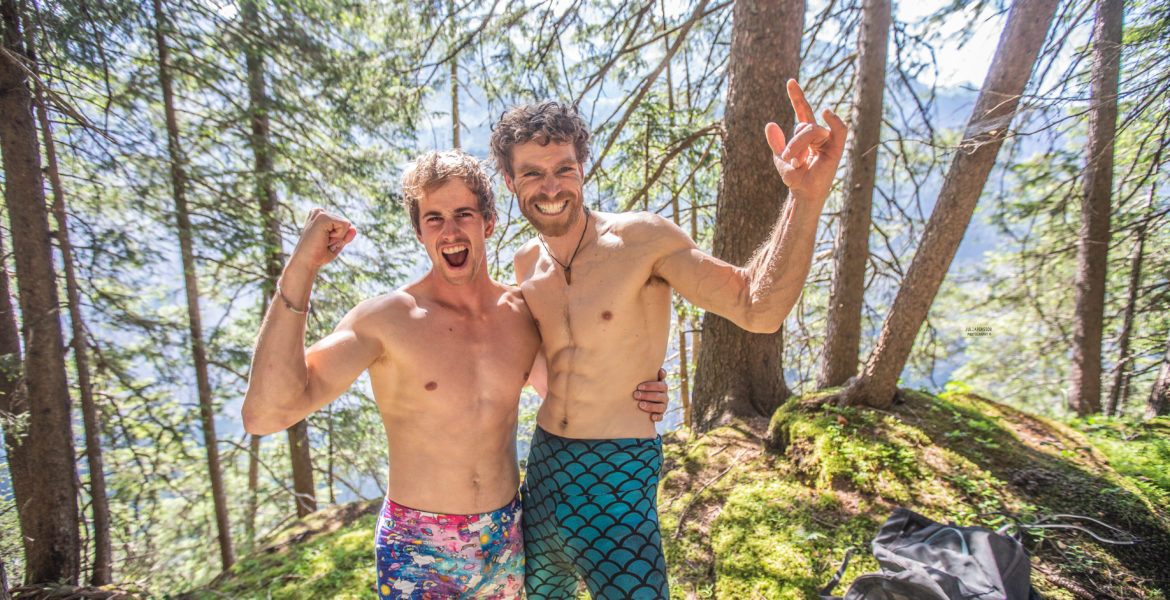
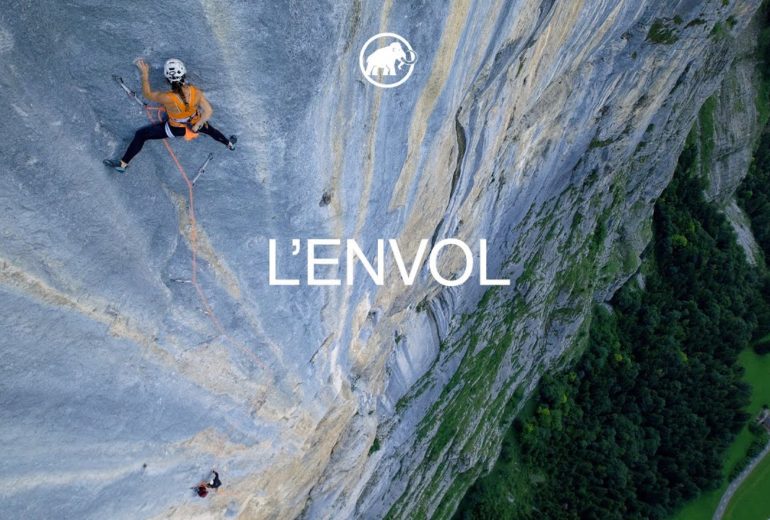
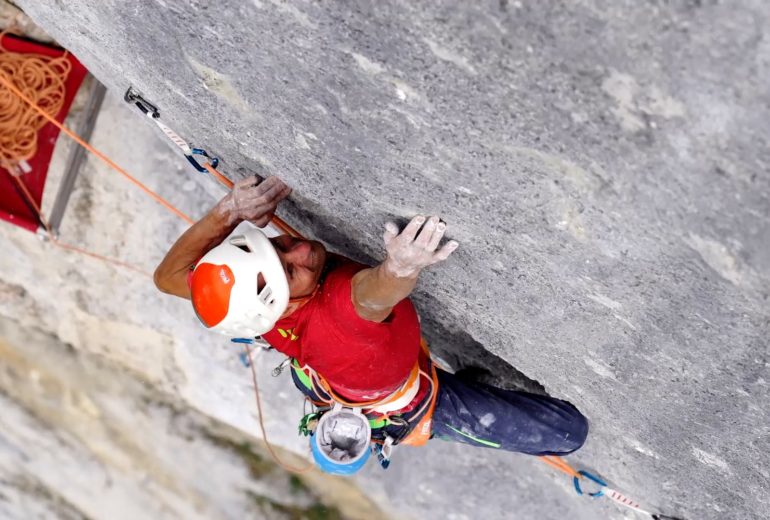
Histoire sans Fin : Première ascension pour Vanhee et Berthe
[…] semaine dernière, les machines belges, Siebe Vanhee et Sébastien Berthe, ont libéré “Histoire sans Fin” – une grande voie de 200m avec 10 longueurs […]